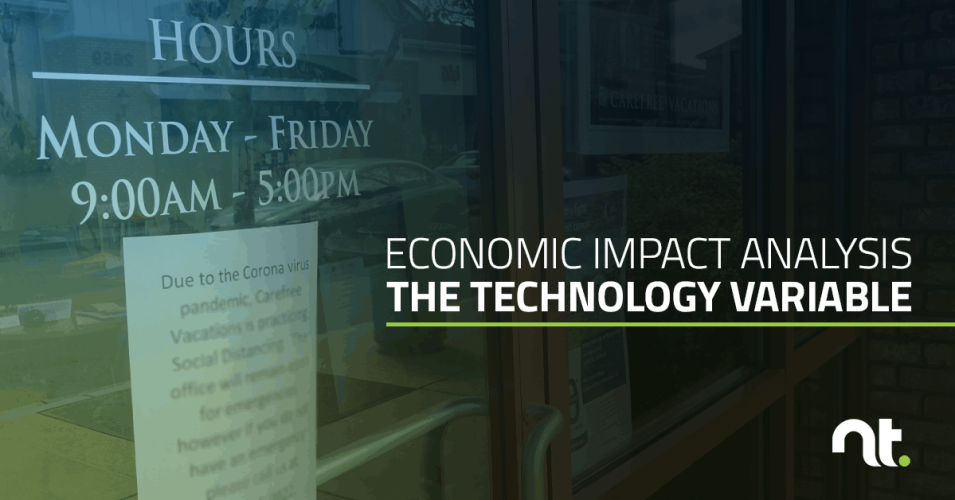READ TIME: 5 MIN

- April 21, 2020
Economic Impact Analysis – The Technology Variable
COVID-19 has brought forth many challenges to individuals, companies, and economies. It is no question that there have been negative impacts on companies and industries throughout the world. There have also been many companies that withstood the storm and excelled throughout the storm. However, it is important to determine the Economic Impact Analysis on your company and industry, not only to assess the damage, but to prepare for future storms similar to COVID-19.
What is an Economic Impact Analysis (EIA)?
An Economic Impact Analysis (EIA) is a methodology for evaluating a project, program, policy, or event and the impact it has on a specific area. This is often used in decision-making as an analytical tool. EIA factors strategic goal achievement in relations to analysis of benefits and financial feasibility. EIA is used to show the impact of an event, program or policy on jobs, productivity, income, operating costs and competition, as well as their distribution among industries, regions and over time.
How does this relate to business today?
Throughout recent events, technology has been an imperative positive variable for a majority of businesses. Most of the country and world went from the daily norm that we were accustomed to one day to putting their social and work lives on hold. Many companies, however, have enabled employees to do almost all job functions from home, ensuring that the impact was mitigated from an economic standpoint.
How did businesses handle COVID-19 and the effects it brought?
The companies that have endured and experienced a lesser amount of negative economic consequences were the businesses that were prepared and had the technology in place to temporarily move to a remote workforce. The companies that were not prepared found themselves scrambling to get the technology in place when demand was at the peak. These companies saw an increased impact to their bottom lines.
EXAMPLE: Bars and Restaurants have closed in almost every state. The businesses that had already adopted programs like Door Dash, Grub Hub, etc., had a backup plan in place and were able to keep some level of business consistent throughout these times. Companies like Door Dash had a sudden influx of restaurants enrolling in delivery service. This caused delays and downtime for the restaurants. Meanwhile the ones that proactively had the functionality of delivery services were able to sustain business.
In what way is technology helping businesses stay afloat?
Technology has been a key player in the success of businesses throughout COVID-19 and has allowed companies to remain open and operational throughout this time. Two of the main methods by which technology is helping are:
- Collaboration- Using platforms such as Microsoft Teams has allowed team members to communicate and collaborate on projects effectively. Microsoft Teams allows face-to-face meetings, consistent chat, and sharing of documents and projects.
- Ease of Access- Whether you are using a Virtual Desktop Interface (VDI), accessing documents from your company’s cloud solutions, or using Desktop as a Service (DaaS), technology allows you to work from home and have full access to the applications, tools, and materials needed to complete work.
What is the EIA of the technology industry in an economic crisis?
Overall, technology is one of the non-negotiable factors in surviving an economic hit such as COVID-19. Without technology, many businesses would have failed or endured a significantly negative impact throughout these times.
How can you ensure technology is enabling your company during times like this?
NexusTek is focused on ensuring our clients are as productive and efficient as possible. We have developed a Remote Workforce Action Plan. Additionally, we would like to invite you to CONTACT US to discuss how NexusTek can help your business weather the storm when difficult times are upon us.
